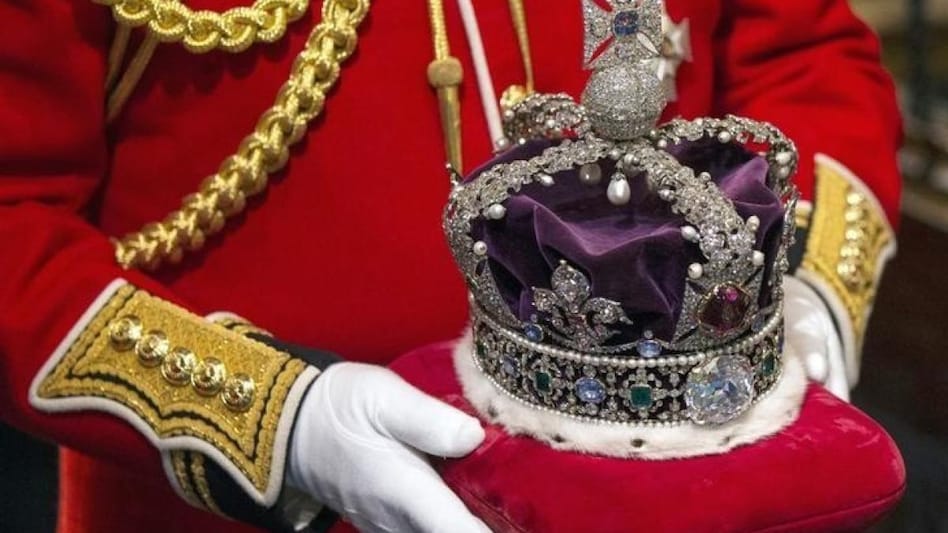 The Kohinoor made its inroads into public discourse when the British Queen Consort Camilla decided she would not wear the contentious diamond at the Coronation ceremony.
The Kohinoor made its inroads into public discourse when the British Queen Consort Camilla decided she would not wear the contentious diamond at the Coronation ceremony.
 The Kohinoor made its inroads into public discourse when the British Queen Consort Camilla decided she would not wear the contentious diamond at the Coronation ceremony.
The Kohinoor made its inroads into public discourse when the British Queen Consort Camilla decided she would not wear the contentious diamond at the Coronation ceremony.The Narendra Modi-led Central government is planning repatriation campaign to bring back the controversial Kohinoor diamond and other artefacts of the colonial era including idols and sculptures from museums across the UK, news agency PTI said quoting a report in the British newspaper The Daily Telegraph. The report said this issue is among one of the top priorities on Prime Minister Modi’s checklist while adding this issue could impact diplomatic and trade talks between the two countries.
While the Archaeological Survey of India (ASI) is reportedly leading efforts to reclaim all objects “trafficked” out of India since Independence, officials are possibly coordinating with diplomats in London to make formal requests to institutions having these artefacts as “spoils of war” or collected by enthusiasts during the colonial rule in India.
The newspaper stated that the Indian government will first approach small museums and private collectors and then move onto larger institutions and the Royal collections. It added that small museums and private collectors might be more than willing to hand over the artefacts.
Senior Indian officials are of the view that historical artefacts reinforce a strong cultural identity. It added there seems to be a political will to achieve the symbolic post-colonial victory that comes with the return of Kohinoor to India.
Lily Pandeya, Joint Secretary of the Ministry of Culture, was quoted as saying: “Antiquities have both physical and intangible value, they are part of the continuity of cultural heritage, of community and national identity. By robbing these artefacts, you are robbing this value, and breaking the continuity of knowledge and community”.
Ministry of Culture Secretary Govind Mohan said that the push to repatriate Indian artefacts from the UK comes from Prime Minister Modi’s personal commitment towards this agenda. Mohan said: “It is of huge importance to the government. The thrust of this effort to repatriate India’s artefacts comes from the personal commitment of Prime Minister Narendra Modi, who has made it a major priority”.
The Kohinoor made its inroads into public discourse when the British Queen Consort Camilla decided she would not wear the contentious diamond at the Coronation ceremony. She instead chose alternative diamonds for her crown to avoid any diplomatic tensions with India.
The British Museum is also likely to face claims over its collection of Hindu statues and the Amravati Marbles taken from a Buddhist stupa by civil servant Sir Walter Elliot. Victoria and Albert Museum’s Indian collection could also be the subject of claims.
Also Watch: Rupee may fall below Rs 80 against US dollar in near-term; check 10 strongest currencies in the world
While most of these artefacts were removed from temples and shrines across different states in north India during the 19th century, the 105-carat Kohinoor was held by rulers in India before getting into the hands of the East India Company. The East India Company got the 105-carat diamond from Maharaja Ranjit Singh’s treasury after the annexation of Punjab.
This diamond was later presented to the former British monarch Queen Victoria and is currently studded in the crown of the country’s longest reigning monarch Late Queen Elizabeth II. The Kohinoor is also known as the mountain of light in Persian.
(With agency inputs)
Also Watch: Ratan Tata, Gautam Adani, Anand Mahindra: Here's how Indian billionaires looked when they were young
Also read: 'Marry & have children': How China plans to improve falling birth rate
Also read: The centuries-long journey of Kohinoor to the crown of Queen Elizabeth II, and now Camilla
Also Watch: Bank Nifty near lifetime high; should you buy or wait for correction? See what analysts say